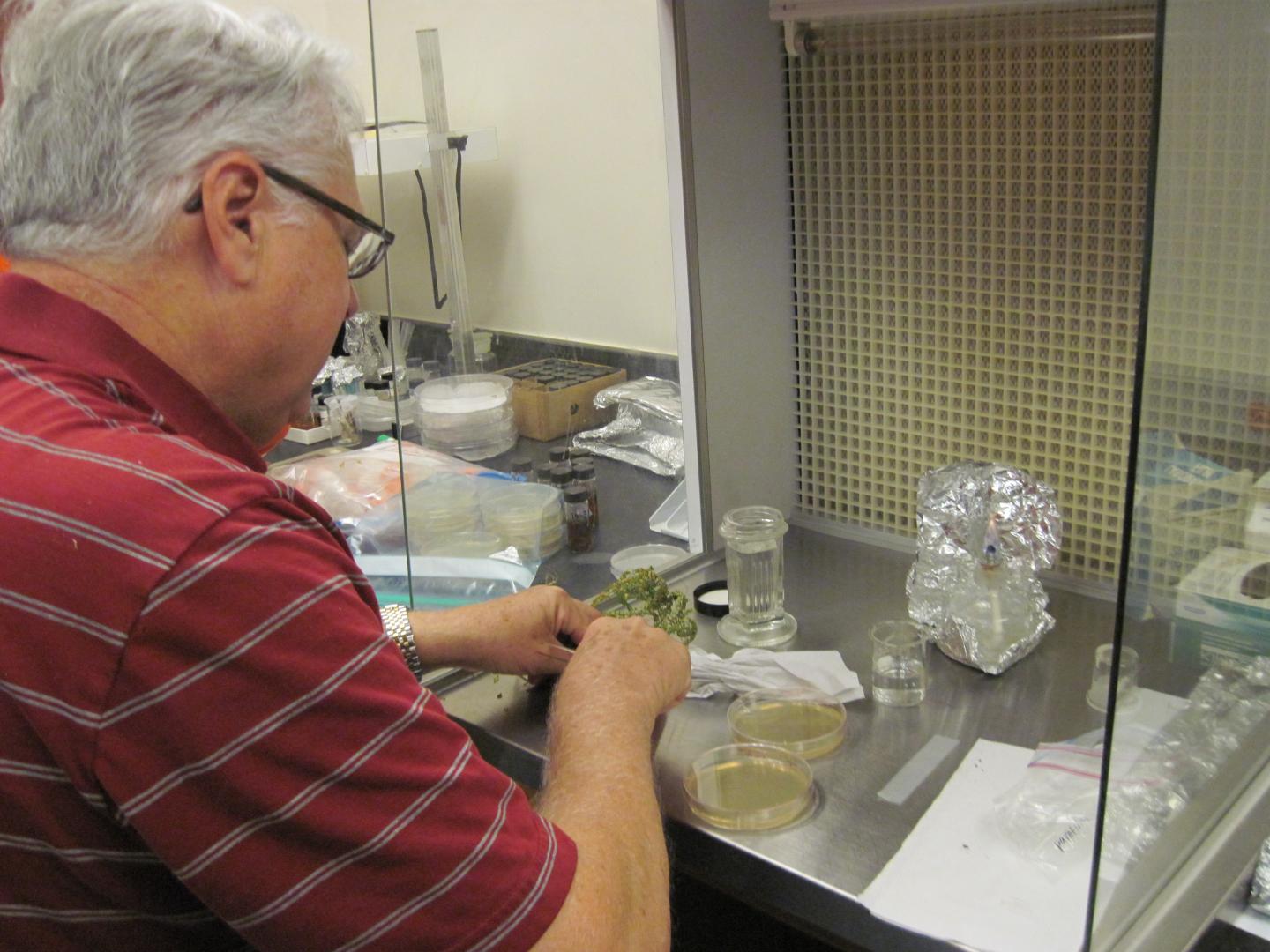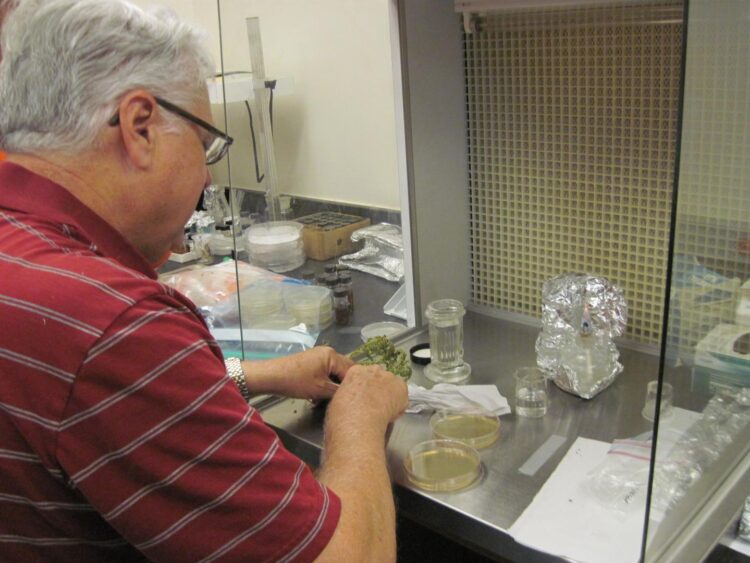Pests pose danger to tomato and other solanaceous crops

Credit: University of Guam
The University of Guam received another round of funding in September under the U.S. Department of Agriculture Plant Protection Act for the surveying and monitoring of invasive pests of solanaceous crops that are on USDA’s Priority Pest List for 2021. Solanaceae, or nightshades, are a family of flowering plants that include tomato, eggplant, and chili pepper. This will be UOG’s seventh year of funding for this purpose.
As part of the national effort this year, UOG was awarded $38,000 to survey and monitor for two pests: Tuta absoluta, which is a moth and type of leafminer capable of destroying an entire crop, and Ralstonia solanacearum race 3 biovar 2, which is a bacterium, known as a bacterial wilt, that infects through the roots and is deadly to plants. The work through UOG better prepares the island to manage these invasive species if or when they arrive.
“There are certain pathogens and insects that have a reputation of being really bad. These are two of them,” said project lead Robert L. Schlub, a researcher and faculty member of UOG Cooperative Extension and Outreach with a doctorate in plant pathology. “They aren’t on Guam, but if they show up, we want to know so we can help get them under control.”
Schlub doesn’t want Guam to face another rhino beetle situation.
While control efforts for the beetle have been underway, the beetle arrived in Guam and remained undetected long enough to make eradication impossible, thereby resulting in the loss of countless coconut trees at considerable economic damage to Guam. Early detection and rapid response to solanaceous pests will help avoid a similar fate as with the rhino beetle.
Schlub and his team set out roughly 70 traps in 10 solanaceous fields. Every other week they inspect the traps for moths and replace the traps’ pheromone lures. They also walk down rows of plants looking for evidence of bacterial wilt.
Ralstonia solanacearum race 3 biovar 2 spreads quickly and causes wilting of leaves and then death. The bacteria appeared in a Michigan greenhouse in April, but before that, it had not been detected on the mainland since 2004. Different and milder strains of the wilt bacterium are known to cause losses among ironwood trees and other crops on Guam.
Moth adults lay their eggs on leaves or stems; larvae then hatch and feed on the plant. Adults are grayish in color with black spots on their wings. The insect can be found across the world, including in China, where it was detected a few years ago.
The number of tomato fields on Guam dropped in years past because of the Guam strain of the Ageratum Yellow Vein Virus, discovered in 2011 by UOG Extension Associate Jesse Bamba. In the past few years, losses from the virus have diminished and farmers have resumed planting tomatoes, taking the number of large fields from three to 10 by 2020.
As of October, the UOG team had not detected either pest at their 10 sites. Suspect moths are sent to UOG entomologist Aubrey Moore for identification and then sent to an off-island USDA laboratory for confirmation. A USDA laboratory is also used to confirm the race and biovar of any bacterial wilt infected plants discovered by the survey team.
Assisting with the characterization of Guam’s bacterial wilt strains are Mohammad Arif from the University of Hawaii and his graduate student Sujan Paudel. Paudel developed a rapid assay test that can accurately and quickly distinguish the race 3 biovar 2 strain. This assay will be used on two UOG ironwood tree projects funded by the USDA.
###
Media Contact
Jonas Macapinlac
[email protected]
Original Source
https:/





